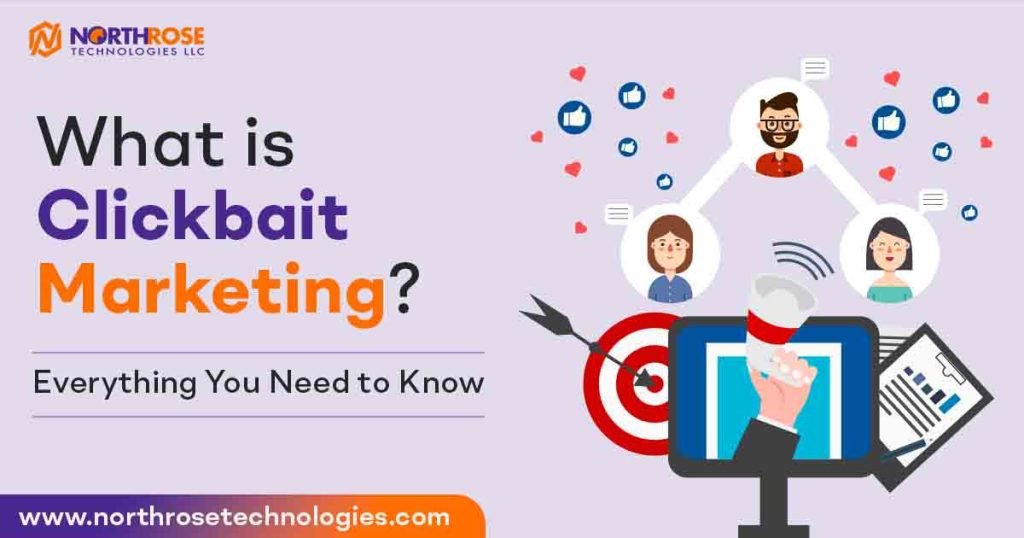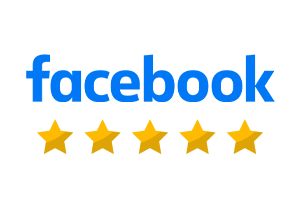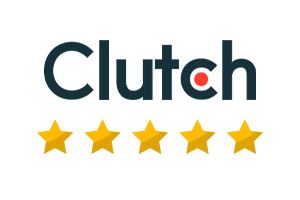Getting your target audience’s attention in the digital age, where information travels like a river, has become an acquired ability. Despite its contentious image, clickbait marketing has become a powerful weapon in the toolbox of digital marketers.
When used properly, clickbait is one of the best strategies to grab readers’ attention and direct them to your content.
What is Clickbait Marketing?
Fundamentally, clickbait marketing is a strategy that uses sensationalized and compelling information to persuade users to click on a link, image, or headline, frequently with the intention of increasing website traffic, ad revenue, or brand awareness.
It has emerged as one of the top marketing trends. Clickbait uses the psychology of intrigue and FOMO (fear of missing out) to pique interest and compel action from viewers. It usually works in tandem with user-generated content.
Although the name “clickbait” is somewhat recent, the idea has existed for years, although in other forms. Early newspapers used sensationalized headlines and images to entice readers to buy their publications, and dramatic narrative has long been a staple of tabloid journalism. However, clickbait has become fairly common in the digital era.
Key elements of a Clickbait copy
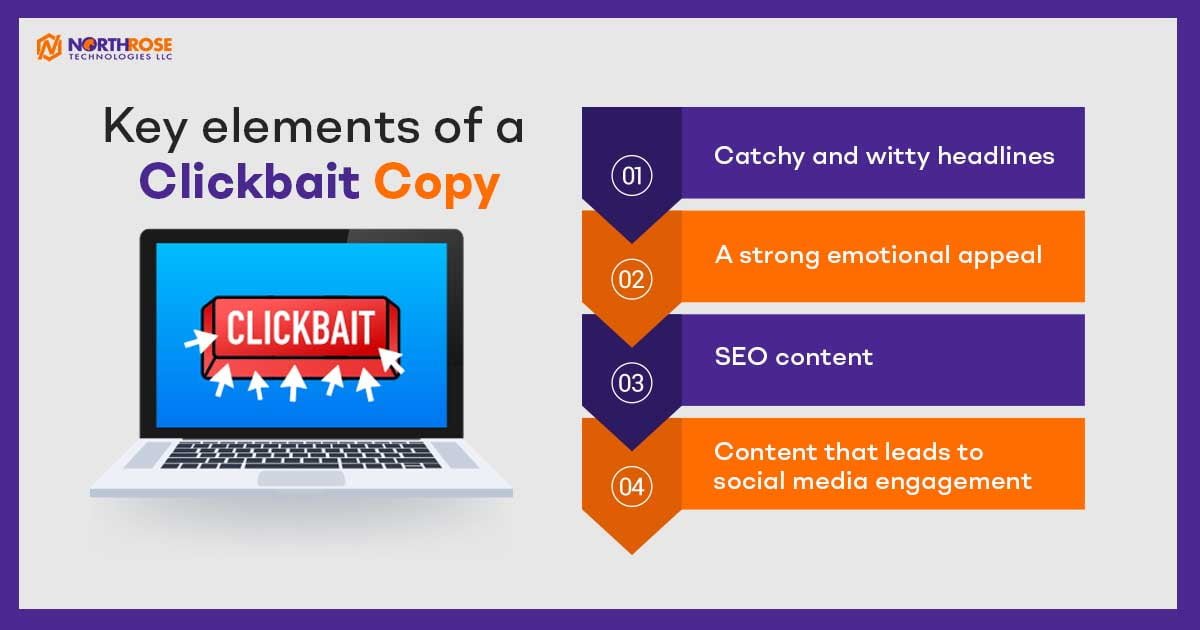
- Catchy and witty headlines
- A strong emotional appeal
- SEO content
- Content that leads to social media engagement
Anatomy of Clickbait Marketing
Clickbait typically employs the following elements:
- Catchy Headlines:
These proactive headlines are designed to provoke curiosity and interest. They often appear as a question, a challenge, or a promise of insider information.
- Engaging Thumbnails:
Clickbait information is usually accompanied by enticing visuals and thumbnails that draw users in. These visuals have been deliberately chosen to be eye-catching and alluring.
- Misleading Content:
Clickbait marketing frequently consists of content that falls short of the norms set by the headline and thumbnail. Users may feel let down by this misalignment.
- Overpromising:
Clickbait articles frequently make extravagant promises or exaggerate the importance of the subject, promising more than they can give.
- Landing Page Optimization:
Whether it’s for collecting email addresses as part of your email marketing strategy, displaying advertisements, or marketing goods and services, clickbait marketing frequently directs viewers to websites that have been optimized for conversions.
Social Media and Clickbait
Given the growth of the internet, particularly social networking and content-sharing websites, clickbait marketing has flourished.
With the capacity to instantaneously share content with the globe, businesses can find great advantages in using enticing, catchy headlines to encourage more clicks and traffic.
Social media platforms in particular have contributed significantly to the popularity of clickbait.
Content that creates engagement, such as likes, shares, and comments, is favored by the algorithms of social media sites such as Facebook, X (previously Twitter), and Instagram.
With its ability to grab attention, clickbait quickly emerged as a go-to tactic for content producers looking to stand out in the crowded internet space.
The Ethics of Clickbait Marketing
Clickbait marketing, despite its allure, has faced significant backlash due to ethical concerns. Let’s take a closer look at these ethical dilemmas.
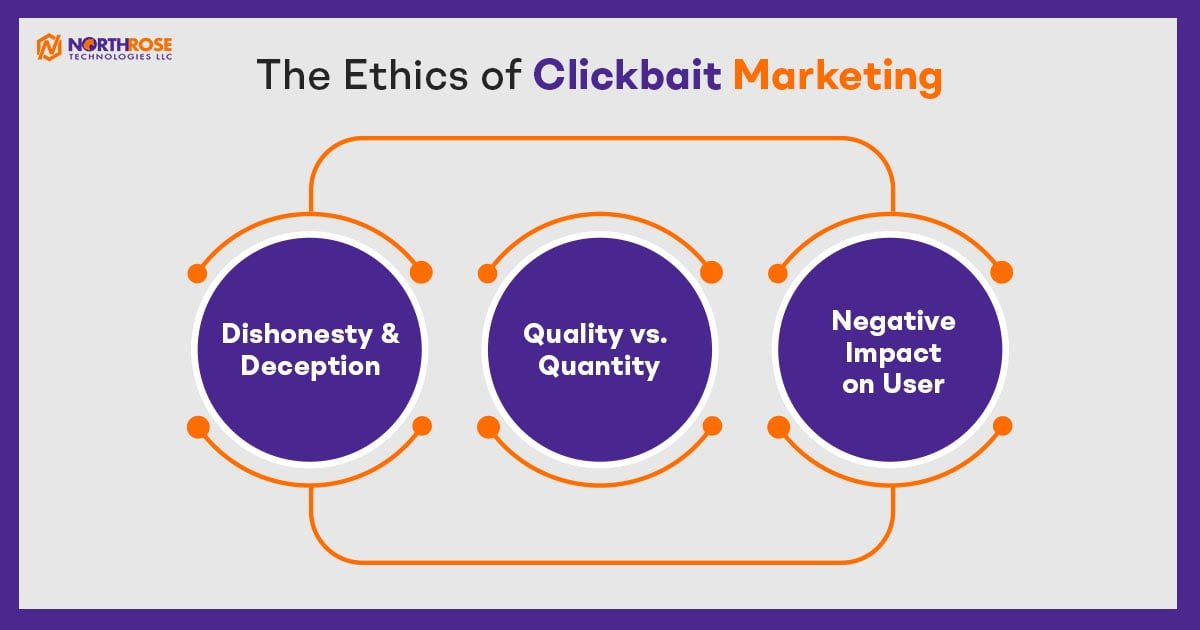
- Dishonesty and Deception
The most obvious ethical problem with clickbait marketing is its propensity for user deception.
Clickbait content undermines trust between creators and their audiences by making promises and then underdelivering.
Users who fall prey to clickbait on a regular basis could tend to become cynical about online content in general.
- Quality vs. Quantity
In clickbait, quantity often takes precedence over quality.
Creators of content ignore the content’s true worth or veracity in favor of churning out numerous sensationalized articles to get traffic.
This strategy contributes to the spread of false information and superficial, uninformative content.
- Negative Impact on User Experience
The user experience can be negatively impacted by clickbait as well.
Users may feel angry and misled if they click on a link expecting one thing and get something entirely different.
User satisfaction and engagement can suffer as a result.
The Effectiveness of Clickbait Marketing
Clickbait marketing is still widely used today despite the ethical issues it raises for one simple reason: it works.
Clickbait is an effective tactic for generating clicks and engagement because it taps into some fundamental features of human nature, namely:
- Curiosity
- FOMO (Fear of Missing Out)
- Leveraging Emotional Appeal
- Visual Attraction
Common key performance indicators (KPIs) for clickbait marketing include click-through rates (CTR), page views, and user engagement. Since it motivates readers to act right away, clickbait content frequently performs well in these metrics.
Best Practices for Clickbait Marketing
Here are some best practices to consider when using clickbait in your marketing strategy:
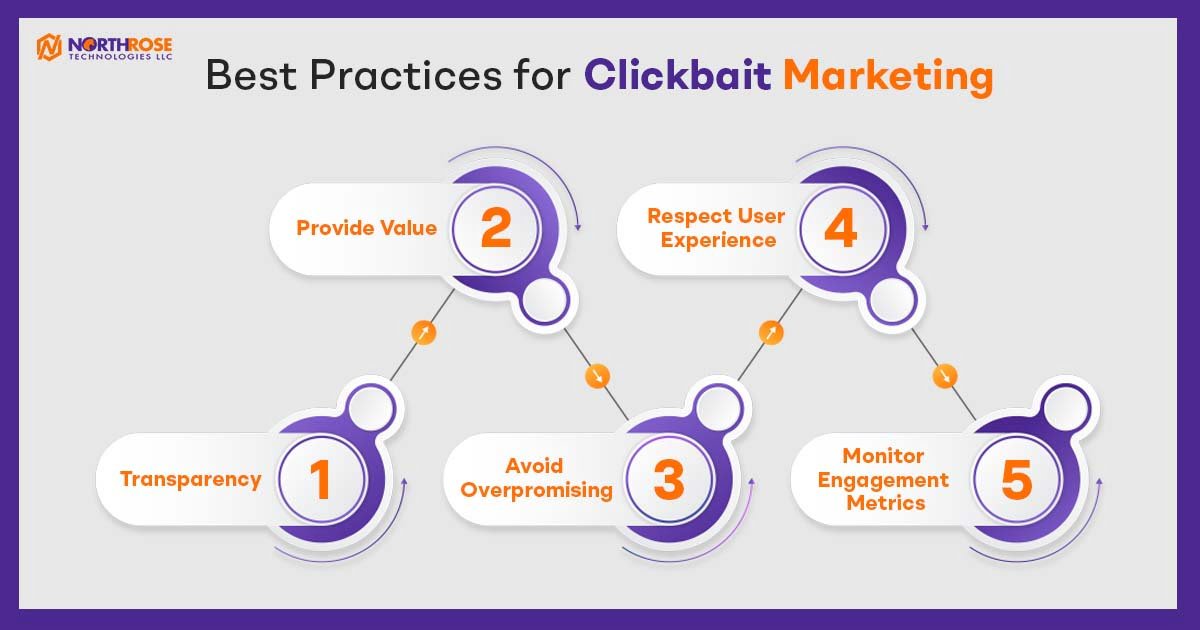
1. Transparency
Transparency should always be a goal for your writing. Make sure the material you provide meets the standards that the title and thumbnail have established. You don’t want to trick users, even if you want to tempt them.
2. Provide Value
Although clickbait might attract viewers, the material itself should offer genuine value. Offer enlightening, educational, or amusing information in addition to hyperbole to keep users interested and satisfied.
3. Avoid Over promising
While some exaggeration can be used in clickbait headlines, stay away from making assertions that are undoubtedly false or ludicrous. Keep your credibility high to maintain your audience’s trust.
4. Respect User Experience
Think about the overall user experience. Avoid spamming your audience with invasive pop-ups or adverts. Make an effort to give your guests a seamless, delightful journey.
5. Monitor Engagement Metrics
Monitor engagement indicators such as bounce rates and time spent on your website carefully. If visitors to your website leave the page soon after clicking, your clickbait may be too deceptive.
The use of clickbait in your marketing strategy can be completed. Making sure you know what you’re doing and how to utilize clickbait to convert unhappy clients is essential for success. North Rose Technologies helps strategize the best ways to incorporate clickbait marketing in your campaign.

